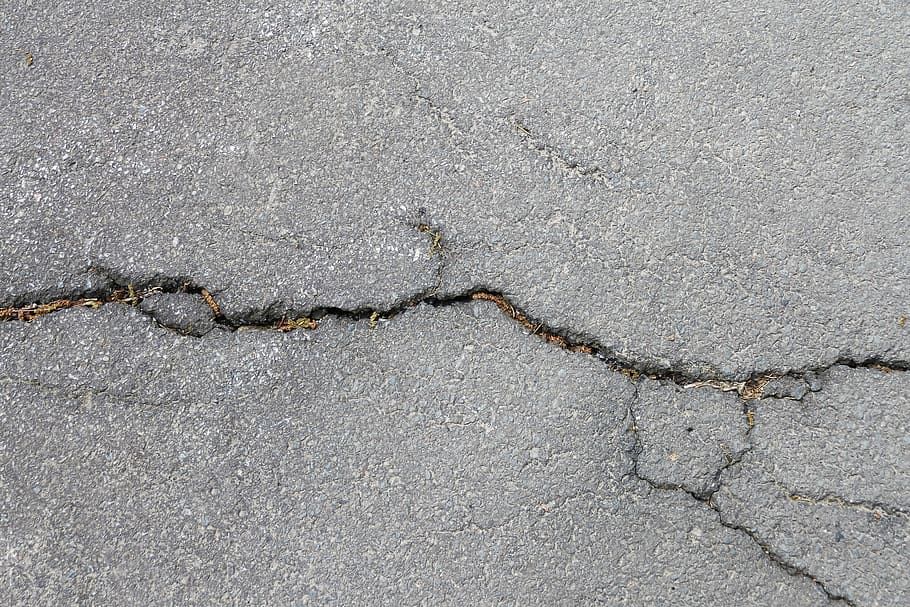
The tugboat captains offered reasonable rationales for sounding whistles. When Rice finally interviewed some of the tugboat workers, she presented their responses as evidence of wrongdoing rather than as the accounts of workingmen describing their labor. Among the endorsees were wealthy hospital superintendents, who lent credence to Rice’s claims to help the sick rather than to punish marine workers. She promised signatures from “poor and rich alike,” but sent establishment personalities to collect them. Rice then went to the police to start a petition drive. Local Steamboat Inspectors decided that “the point was not well taken.”
#BROKEN ASPHALT TEXTURE PROFESSIONAL#
any act on the part of a licensed officer that they adjudge to be ‘misconduct’ or ‘negligence’ or ‘unskillfulness.’” In other words, Rice attempted to present the call of tugboat horns as professional misconduct. In the New York City Collector’s Office Law Division, she discovered a clause that “seems to vest in the Local Board of Steamboat Inspectors all necessary powers to punish. Rice portrays herself as a dogged crusader, pleading for quietude amidst unrelenting clamor.įirst, she sought aid from the law.

The piece recounts Rice’s efforts to ban excessive whistling from aboard their vessels. Who are these insipid people in Rice’s narrative? The tugboat workers. There are people, it is true-nay, a great many people-who smile at such, because they are not sensitive to noise but they are just the very people who are also not sensitive to argument, or thought, or poetry, or art in a word, to any kind of intellectual influence. She begins by channeling the pessimistic philosopher Arthur Schopenhauer, who likens noise to boorishness: In 1906, he published her piece, “ An Effort to Suppress Noise ,” which amounts to a call for class antagonism. Isaac Rice, her husband and the publisher of The Forum, became a champion of his wife’s crusade. So she decided to use the poor and sick people languishing in urban hospitals as a scapegoat. But she knew that this appeal would fall on deaf ears, so to speak. The sound of tugboat horns was causing Rice great annoyance as she tried to relax in her ornate Italianate mansion.

One of the earliest urban antinoise campaigns was initiated by Julia Barnett Rice, the wealthy, well-educated wife of a businessman and publisher. Noise-abatement laws transformed an objective concern about environmental and health conditions into a subjective fight over aesthetic moralism. Sirens are a particularly extreme example of the kind of noise inflicted on people every day: They ring at a sound-pressure level of 120 decibels -a level that corresponds with the human pain threshold, according to the World Health Organization.īut since the turn of the 20th century, protecting human hearing has taken a back seat to securing quiet for those with means, and punishing those without. Urban life also sustains average background noise levels of 60 decibels, which is loud enough to raise one’s blood pressure and heart rate, and cause stress, loss of concentration, and loss of sleep. If you have an hour-long commute at such sound levels, your hearing has probably already been affected. That’s enough to cause significant hearing loss over time. People living in cities are regularly exposed (against their will) to noise above 85 decibels from sources like traffic, subways, industrial activity, and airports. But environmental noise is just as unsafe. Solving the environmental-noise problem has been difficult, partly because for more than a century antinoise advocates have fought for the right to silence rather than the right to hear.Ĭoncerns about hearing loss largely focus on excessive noise exposure. That makes noise pollution a matter of bodily autonomy. But people do not necessarily have the ability to avoid high levels of environmental noise-it’s in their neighborhoods, near their schools, at their workplaces. People can avoid using earbuds excessively or attending loud concerts. Sound at certain frequencies just vanishes-birdsong, intelligible human speech, the gentle rustling of leaves, the crispy highs of brushes on jazz cymbals.

People tend to assume that hearing loss is akin to turning down the volume in one’s head-that everything just sounds quieter. Unlike many other injuries, hearing damage is irreparable.


 0 kommentar(er)
0 kommentar(er)
